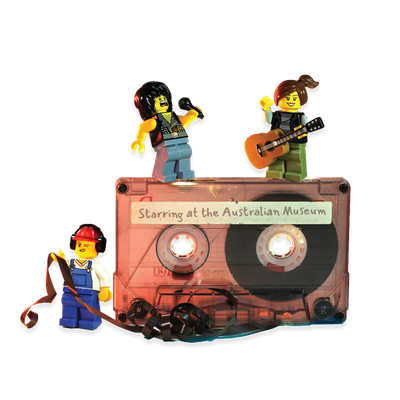Your search returned 102 results
By Page Type
By Tag
- All
- fish (966)
- blog (696)
- fishes of sydney harbour (401)
- First Nations (299)
- Blog (236)
- AMRI (169)
- archives (164)
- Eureka Prizes (146)
- Aboriginal and Torres Strait Islander (135)
- insect (126)
- Ichthyology (124)
- geoscience (109)
- minerals (102)
- climate change (99)
- podcast (94)
- Fish (91)
- Anthropology (89)
- International collections (80)
- Minerals Gallery (78)
- wildlife of sydney (78)
- Labridae (77)
- frog (74)
- gemstone (70)
- photography (66)
- history (64)
- Mollusca (60)
- gem (59)
- staff (59)
- Birds (56)
- Gems (56)
- Indonesia (56)
- education (56)
- shark (55)
- AMplify (54)
- people (53)
- earth sciences (50)
- exhibition (50)
- past exhibitions (50)
- Gobiidae (48)
- sustainability (46)
- Pomacentridae (45)
- Serranidae (44)
- lifelong learning (42)
- science (42)
- Earth and Environmental Science (41)
- Syngnathidae (41)
- Ancient Egypt (40)
- Bali (40)
- bird (40)
- dangerous australians (40)
-
Celestine
https://australian.museum/learn/minerals/mineral-factsheets/celestine/This large hollow geode lined with sky blue celestine crystals was purchased from a Victorian mineral dealer.
-
Cuprite on Calcite
https://australian.museum/learn/minerals/mineral-factsheets/Cuprite-on-calcite/Emke Mine in Namibia has produced some very large cuprite (copper oxide) crystals, with some being of gem quality and able to be faceted into rare dark-red gemstones.
-
Glitter restored – The Holtermann 'Nugget'
https://australian.museum/learn/news/blog/glitter-restored-the-holtermann-nugget/Did you know we have a newly-restored replica of the largest single mass of gold ever found?
-
The Australian Museum Minerals Gallery
https://australian.museum/publications/minerals/minerals-gallery/The Australian Museum Minerals Gallery is a brilliant showcase of the full breadth of the Australian Museum’s collections in the Earth Sciences.
-
Albert Chapman Collection
https://australian.museum/publications/minerals/albert-chapman-collection/The Albert Chapman Collection is renowned worldwide for its mineralogical diversity, crystal perfection, aesthetic appeal and high Australian content.
-
Object and species identification
https://australian.museum/learn/species-identification/Curious about objects or specimens you've discovered? Identify Australasian animal life, geology and cultural objects through our Ask an Expert enquiry form, common enquiries webpages or discover species with our interactive Identification Key.
-
History of the Minerals Department
https://australian.museum/about/history/people/history-of-the-minerals-department/The mineral collection is one of the oldest and largest collections in the country, housing many examples of early Australian mining.
-
Geological origin of gemstones
https://australian.museum/learn/minerals/gemstones/geological-origin-of-gemstones/Gemstones are formed below the Earth's surface and can sometimes show traces of other minerals, called inclusions.
-
Valuing gemstones
https://australian.museum/learn/minerals/gemstones/valuing-gemstones/Gemstones are valuable because they are a rare and desirable commodity. They also represent time and labour spent on cutting and presentation.
-
Mineral groups
https://australian.museum/learn/minerals/what-are-minerals/mineral-groups/Minerals can be classified into distinct groups based upon similar atomic structure and/or chemical composition.
-
Discover more
2025 Australian Geographic Nature Photographer of the Year
Special exhibition
Free entry
Now open -
Discover more
Unfinished Business
Special exhibition
Free entry
Now open -
Discover more
Wansolmoana
Permanent exhibition
Free entry
Open daily -
Find out more
Burra
Permanent kids learning space
Free entry
10am - 4.30pm![]()
-
Discover more
Minerals
Permanent exhibition
Free entry
Open daily![]()




